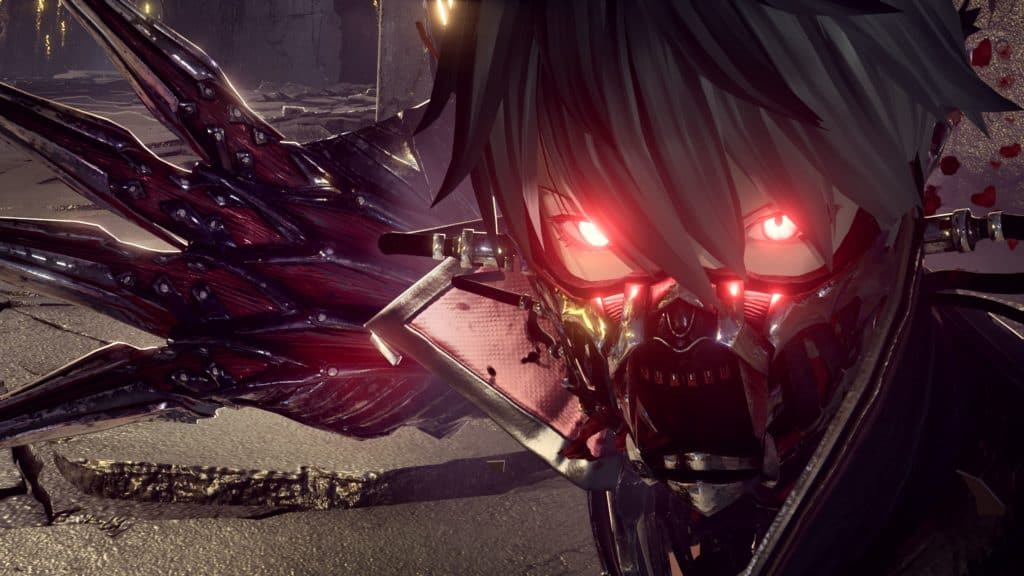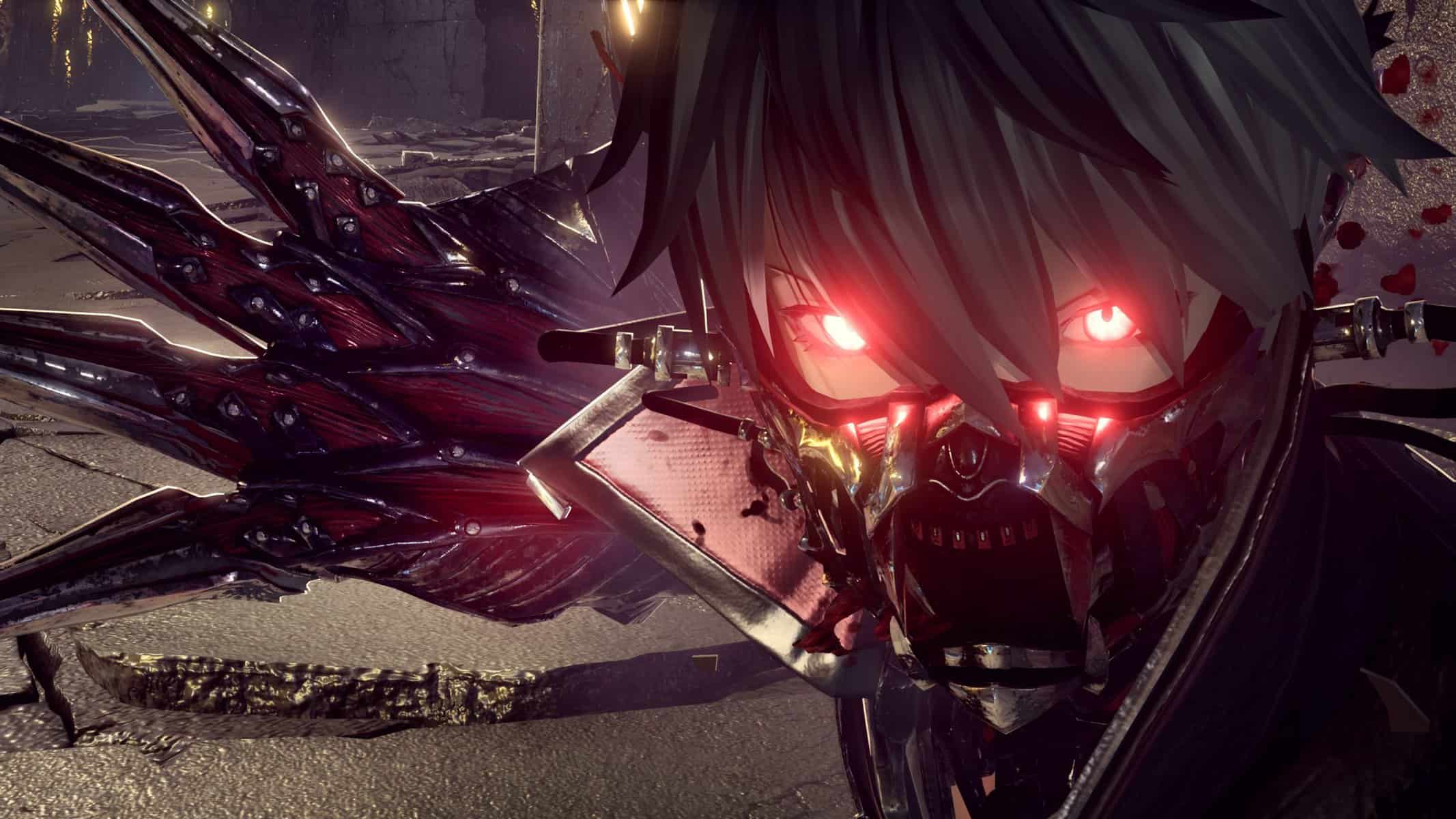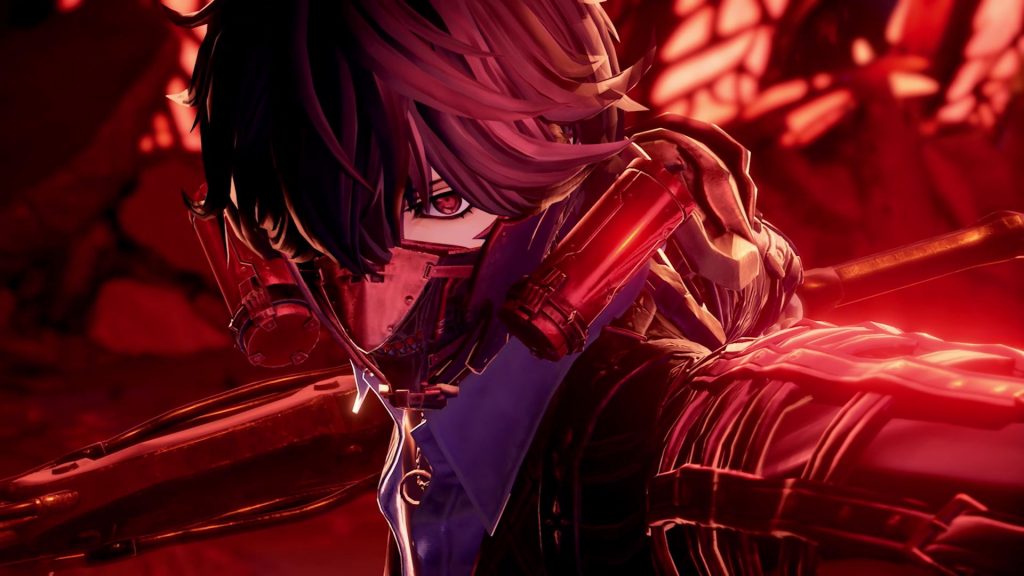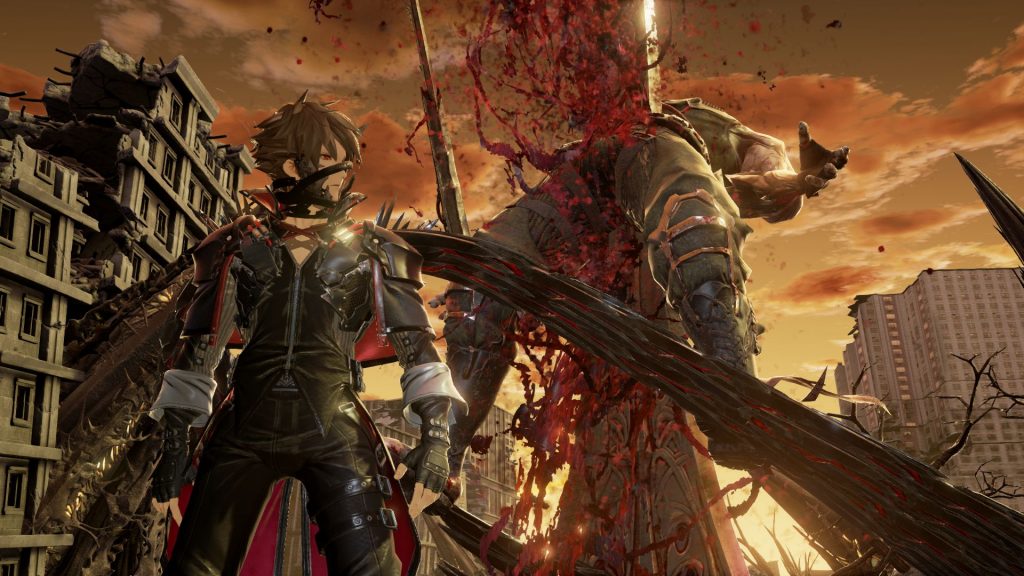You can trust VideoGamer. Our team of gaming experts spend hours testing and reviewing the latest games, to ensure you're reading the most comprehensive guide possible. Rest assured, all imagery and advice is unique and original. Check out how we test and review games here
If you didn’t know better, you might hear the title ‘Code Vein’ and assume that Bandai Namco had produced a perfume. The characters are exactly the sort to sell it – crisp open collars, moony expressions, and airy necklines. One of them even slumps against the flank of a muscle car. The game has the essential qualities of a fragrance, too, albeit a cheap one: it’s richly overpowering, layered with gaudy notes, and quick to fade. If you take the combat of Dark Souls, leech the difficulty, inject it into the blustery melodrama of an anime, and coat it all with vaguely vampiric frippery, then you get Code Vein. But the question, with this crush of styles, is: does any freshness emerge? Not a whiff.
To say that Code Vein involves vampires wouldn’t quite be right. For a start, the V-word has been banished. What we have instead are Revenants, pale do-gooders who mope through the ruins of a city. At one point, one of them says, ‘Humans aren’t property. They have the same right to live that any of us do.’ I couldn’t help but think back to Blood Omen, to the snobbish swagger of its hero, who described humanity as a herd in need of thinning, and wonder, Is this the legacy of Kain?! Thankfully, we also have the Lost, a group of Revenants who have turned bad, shrugging off their humanity like an unfashionable shirt. We might call them traditionalists. All of the characters bare their skin under the sun, without fear of it flaming up or, far worse, breaking out into a glimmer, like the poor souls in Twilight.
And what about sustenance? Blood, blood everywhere, but not a drop to drink; there are Blood Veils and Blood Codes, there are bloodveins, leading to bloodsprings, which produce Blood Beads. But only once did I catch a glimpse of canines, with a modest smudge of red around the mouth; the rest of the time, everyone’s faces are caged in what look like the vampire equivalent of chastity belts – but are in fact gas masks. These are often required in the open air, and you can see why: black spires have burst up through the buildings, the sky is a sour yellow, and monsters rage through the wreckage. Whatever is out there, it’s catching. As cataclysms go, Code Vein’s is less enamoured of The Last of Us, with its softly sprouting greenery, and more of Devil May Cry 5, in which nothing was soft at all.
You play a blank, silent slate of a hero (whom you fully customise) who wakes, as would only be appropriate, with a dose of amnesia. After falling in with a clan of Revenants, who hide out in the crumbling shell of a church, you move from place to place – propelled, I guess, by the plot, but I couldn’t really say – hacking away at the Lost. The hacking is the best thing about Code Vein. If we had amnesia, and were wiped of our memories of Dark Souls, Bloodborne, and Sekiro – to say nothing of any number of other imitators – it would be even better. The lock-on, triggered with a click of the right stick; the strafe; the dodge, filled with invincibility frames to ghost you out of trouble; and the stamina bar, which marshalls your movements. It’s all here.
But the combat in Code Vein is lighter; the punishment that FromSoftware saw fit to dole out has been pulled in favour of faster fun. You are often nudged along by an AI partner (though, for those that relish a more spartan challenge, you can go it alone), who will heal you and wade merrily, and capably, into battle. This gives the game a breezy, more frantic feel, as you fight for control amidst a crazed din. When you pull off a perfect parry, for instance, you are sealed into an animation like a summons from Final Fantasy – wherein, depending on which gear you have equipped, the sleeves of your jacket might turn into twin hounds, or your hand may grow into a bladed glove. This is worth doing for two reasons: one, it gives you a graceful moment of calm, in which you can’t be hurt, and two, it replenishes your supply of Ichor – which sounds like an anti-ageing eye balm but actually fuels your powers.
These consist of the usual buffs, heals, and damage-dealing magics that you would expect – varnishing your sword with venom, say, or temporarily souping up your dodge speed. The powers belong to various classes, which you can toggle whenever you have time to open the menu (there isn’t a pause button, naturally). I lacked the time, and the tinkerer’s inclination, to tailor a style of my own, but it’s to Code Vein’s credit that I was also never bored by the bouts. Periodically, you are jolted by sudden jags in difficulty, but so unsparing is the game with Haze (better known as Souls) that you can often head to the nearest Mistle (better known as a Bonfire) and jump four or five levels in a single spend. It’s tough to quibble with that sort of zip, even when the true feeling of triumph has leaked from the action.
In fact, if it weren’t for the fighting, I would scarcely have made it through Code Vein. I’ve had soup with more narrative cohesion; the plot is told in fits of flashback, unanchored by any of the characters, who fade in and out with fragments of backstory. The conversations don’t help matters. There are awkward pauses between lines, with shots of faces frozen in wait; it makes some of the supposedly emotional moments seem as if they were conducted over a bad Skype connection. If you find yourself wondering whether a particular scene is supposed to be impactful, keep a careful ear tuned to the soundtrack: any sombreness is signalled with a delicate blasting of organ. Then there is the sweaty stare of the camera, which, when faced with any woman, strains to keep above the chin and often collapses into closeup on any cleavage it can find.
The odd twist, in the curse of the Dark Souls clone, is that, even if it brings its own tricks to the table, with fresh tweaks to the established formula, it’s the elements outside of the formula that shine through and shame it. Though FromSoftware’s games are known for the bonfires, the fights, and the frustration, they are also beautiful; their stories are stark, welling up under layers of stone. Code Vein tries for similar splendour: note the Cathedral of the Sacred Blood, with its creamy, wedding-cake walkways and broken lattices; it sounds like something from Bloodborne but looks like an analogue of Anor Londo, from Dark Souls. Or the Ridge of Frozen Souls, a wind-whipped tundra that aims for the allure of Snowy Mountain Pass, from Ashes of Ariandel, but ends up leaving us cold. I can’t speak for anime fans, but die-hard FromSoftware devotees, as well as those who thirst for a really good vampire game – currently a malnourished bunch – are both parishes to which I belong. And I suspect both will wish for more bite.
Developer: Shift / Bandai Namco
Publisher: Bandai Namco
Available on: PlayStation 4 [reviewed on], Xbox One, and PC
Release Date: September 26, 2019
To check what a review score means from us, click here.











